Buying classic motorcycles at auction and from collections is the beginning of a journey which means a great deal of spending afterwards, unless you’re just parking it up and leaving it. Parking it up and leaving it is often the way many classic motorcycle collectors and investors go as they wait for values to rise before undertaking any work to their machines. Many also just buy them, park them up and sell them on with a declaration that it ran when it was parked up five years ago. This strategy can pay off in the long run, financially only, but as buyers become much wiser, these type of machines become very difficult to sell with very few buyers willing to take such a risk. The obvious alternative is to buy from The Motorcycle Broker, which means paying more up front, but much less in the long run as we chase out all of the problems included in the purchase price when you buy using the most extensive of our four purchase systems. We always test ride our machines for at least 100 trouble free miles prior to delivery when buyers buy using that particular service. Only by chasing out all of the poor historic work and the age related gremlins can we offer our unlimited mileage one year warranty. Buying classic motorcycles at auction means you are buying into historic poor maintenance from an era when the machine had little value and history means nothing when it comes to the condition of the machine. No one knows what you are buying into as no one has X-ray vision. There are some bargains to be enjoyed, but you will need to start to spend money on the machine and there are many risks involved with buying at auction or from a collection, expecting the machine to be up to specification. Many buyers are impressed by the home of a collector, the glitzy garage and think that if the owner spent that much on their garage then the bikes must be great. Buyers are also often taken in by the amount of motorcycles a collector has and thinks that they must be buying from a great source; quantity and shininess mean absolutely nothing. What really counts is when you get the bike on a ramp, finish investigating it and test riding it. Buying classic motorcycles at auction and from collections does not prevent the journey of further costs as you can see in this video interview with classic car paint expert Gundula Tutt on our YouTube channel here.
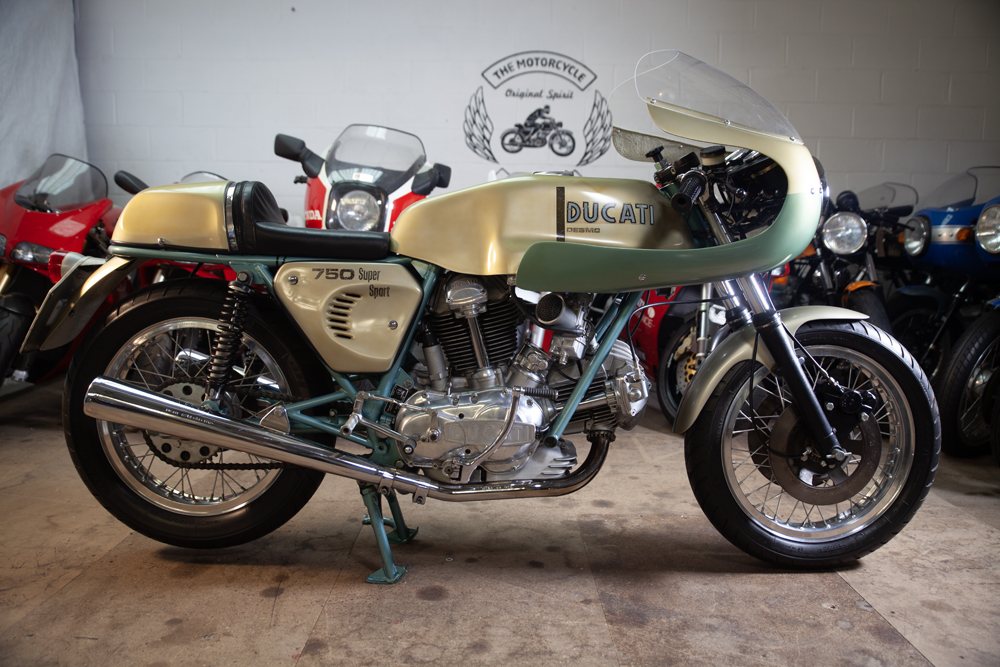
Classic motorcycle auction terms and conditions
Classic motorcycle auction terms and conditions are such that the machine is sold on site as seen with no due diligence and not running. The environment is such that it is imperative to set a bidding limit taking into account auction fees, future work required and having done full due diligence yourself. If the motorcycle was misdescribed, the auction house has no responsibility at all and it is a private matter between the buyer and seller. Costs of such court processes are usually around £50,000 in the UK and if the seller is abroad, then good luck. When doing your due diligence the motorcycle can only usually be seen standing in a room and you cannot remove any bodywork. Consequently, buying a Ducati 916 SP at auction means you have no way of knowing the condition of the machine underneath the bodywork or if the bodywork is correct for that machine. There is no way of knowing whether the gearbox is sound, what the state of the motor is in internally, or if the electrics all work correctly. We have written in this article about how all Ducati 916 SPs require work due to age. Classic motorcycle auction terms and conditions are very clear about stating that buyers are on their own when it comes to further work on their purchases. Buying from The Motorcycle Broker means that all of this associated risk is removed as we do all of the due diligence, investigate the machine prior to purchase and do all of the remedial work included in the purchase price price if you use our premium service. Buying an MV Agusta 750 Sport at auction is brought with risk, there are only four people in the world we would trust to rebuild these motors, as there is an awful lot to know about them. There are some pretty ones on the market and they have all the correct parts, but they really are a grenade without a pin if the motor is not fully rebuilt by one of those four people. This is why so many buyers pick them up from auction, or other collectors, and just leave them static until prices rise sufficiently to warrant paying the right people to do the right work. Buying classic motorcycles at auction and from collections can work, but you have to be prepared to spend money on the machine afterwards and ensure your due diligence is spot on. Should a buyer get their due diligence wrong, it can end up be very costly indeed. Buyers do not work with these machines day in, day out and do not have access to the information that professionals have. I have been in so many collections around Ducati green frames, MV Agustas, Kawasaki Z1 900s, CBX1000s etc where I am very vague and say as little as possible to preserve the collector’s modesty, unless I’m asked questions very directly and even then I’m often evasive. Buying classic motorcycles at auction and from collections leaves you on your own when it comes due diligence or to any further work required.
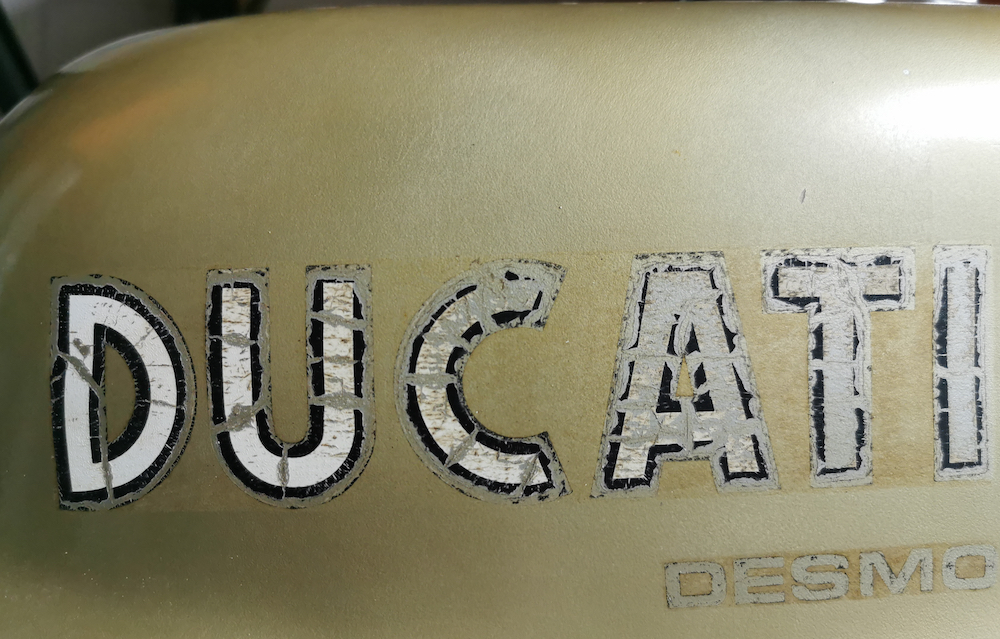
We bought the Amelia Island green frame at auction for a customer
We bought the Amelia Island green frame at auction for a customer and picked it up for a fantastic price for them. We already knew the motorcycle’s history, we knew it was genuine and we still spotted issues the seller and auction house missed through no fault of their own. The machine was marketed as ”One of the Finest Unrestored Examples of One of the World’s Most Desirable Motorcycles”. This was in essence true, and I state clearly that there was absolutely no intent to deceive at all by the seller or the auction house. When looking at the pictures, prior to the sale, we spotted that the fairing had definitely been repainted and the painters had yellowed the paintwork enough to fool most people and we spotted this because we work with paint on a daily basis and know what to look for. I notified the buyer and said we could resolve it and made it clear that this was still one of the finest examples out there. It turned out that the front mudguard had also been repainted as well, but the rest of the machine was indeed unrestored and there was no way of knowing the mudguard had been repainted from the detailed photos or by inspecting the machine in person. Once we got the bike to the UK and put it under UV lights we could see the non-original paint, but you could not tell any of this via the auction process. We only knew about the fairing because we work with paint every day and know what to look for, but we couldn’t spot the repainted front mudguard. After much work, the Amelia Island green frame is now all resolved, making it probably one of the best unrestored green frames out there and will certainly become one of the best known over the coming years. We have had the original paint analysed in a lab and can re-make the original paint for the fairing and front mudguard which will be finished shortly. Unrestored green frames present many dilemmas that need addressing. Firstly, the original bodywork with the original paint needs to be retired or it will degrade terminally, very quickly and won’t add value. The owner chose to follow our recommendation of making replica bodywork and painting it with modern 2K paint to use on the motorcycle from now on. We then recreated perfectly the yellowing of the original paint, the factory run in the silver on the tank and the crazed waterslide transfers on the machine. This process has recreated perfectly the patina at this moment in time on this motorcycle so that the original paintwork and bodywork can be preserved and retain its integrity.
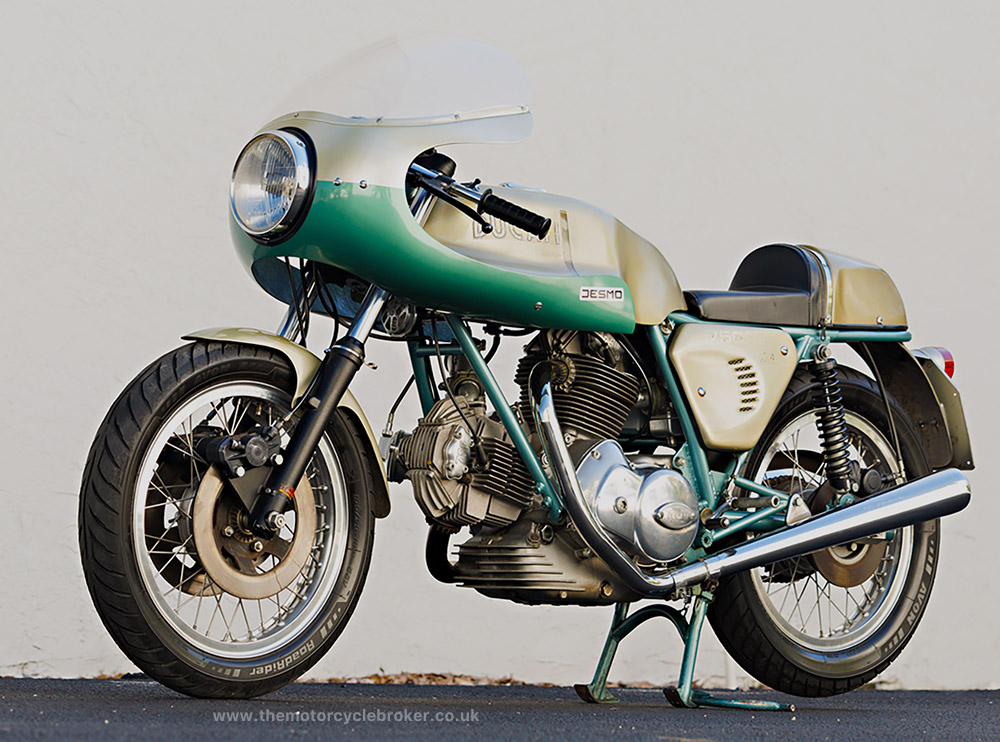
Amelia Island green frame came with engine problems
The Amelia Island green frame came with engine problems, some were built in at the factory and the others were all age related. The bike had not been run for twenty five years and the residues of oil left in the cylinder heads had turned to varnish. This varnish had blocked all oil ways in the cylinder head and had ruined all of the bearings in the top end. Fortunately, the treacle like oil had not had the same effect on the crank or mains bearings. Ducati had to hand build all 401 green frame engines and individually built each cylinder head to facilitate Desmodromic valve operation. The green frame was the only Desmodromic valve round case machine on offer to the public. We know of numerous green frames that came from the factory with problems caused by the bespoke nature of the cylinder heads and this bike was no exception. Machining often really fell short and the bikes were thrown out the door with known serious faults to bring in much needed cashflow. This one had the lower right hand bevel tower bolt incorrectly drilled so it went through the lower closing rocker pin bush. They bolted the bevel tower to the head and hammered the pin into the cylinder head which bent the offending bevel bolt. It took us an afternoon to remove the bolt and days of work to weld up the original hole and re-drill it in the correct place. You can see a full video of the problem and how we repaired it on our YouTube channel here. The problems caused by the oil turning to varnish had ruined all of the bearings in the top end, so the bevel tower had to be removed to replace the bearings. The Amelia Island green frame came with engine problems from the factory and others caused by being in a static collection for twenty five years, along with some previous poor work. All of these hidden surprises from a motorcycle which had genuinely covered only 5,000 miles from new. Now the Amelia Island green frame is perfectly preserved, conserved and ready for joy with no issues. Buying classic motorcycles at auction and from collections will always deliver these type of issues, at minimum, because of the nature of the way of purchasing.
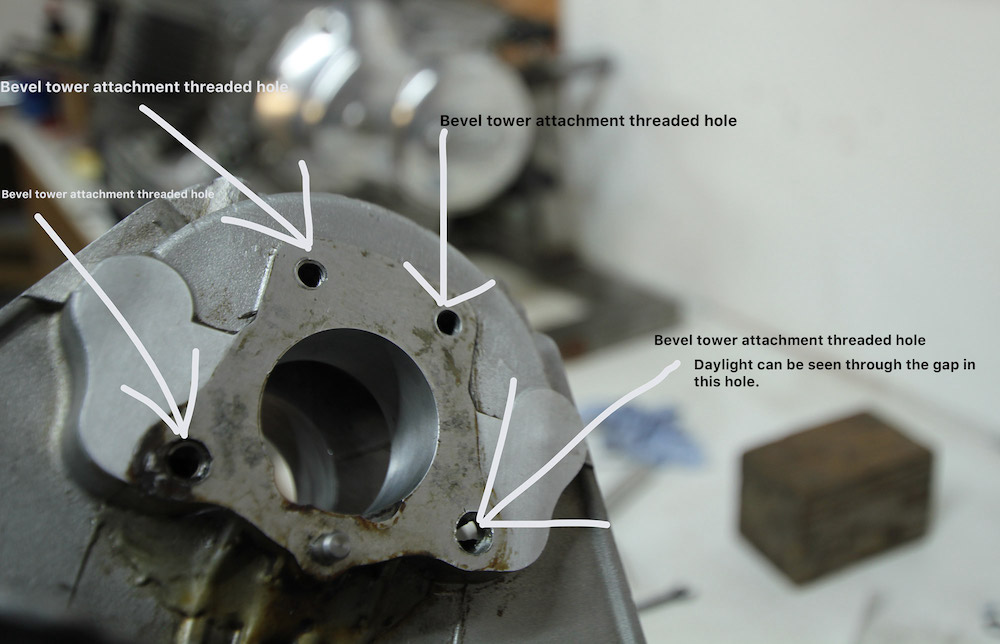
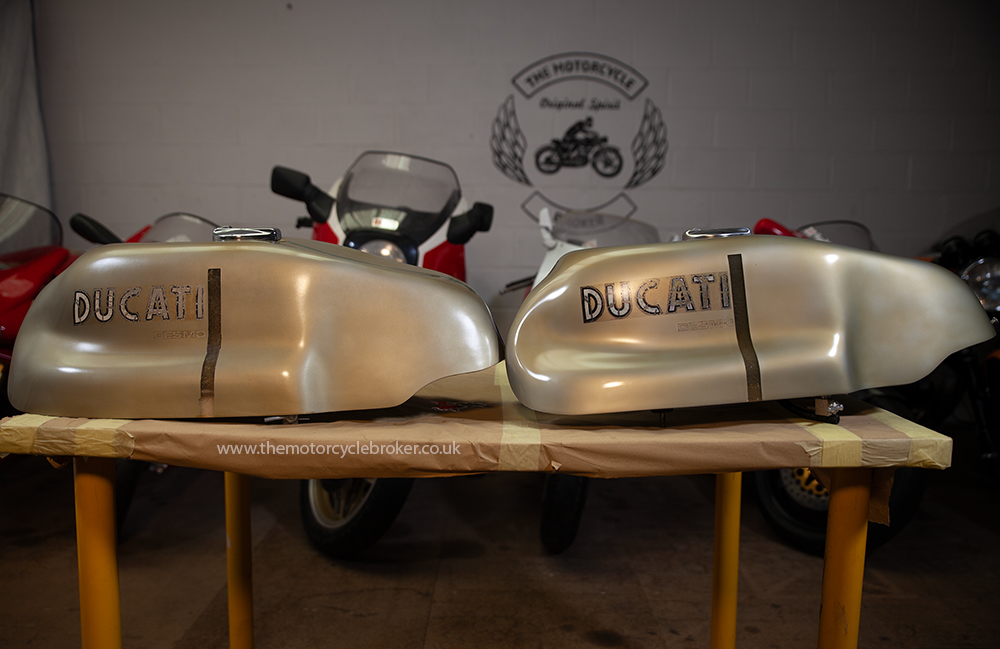
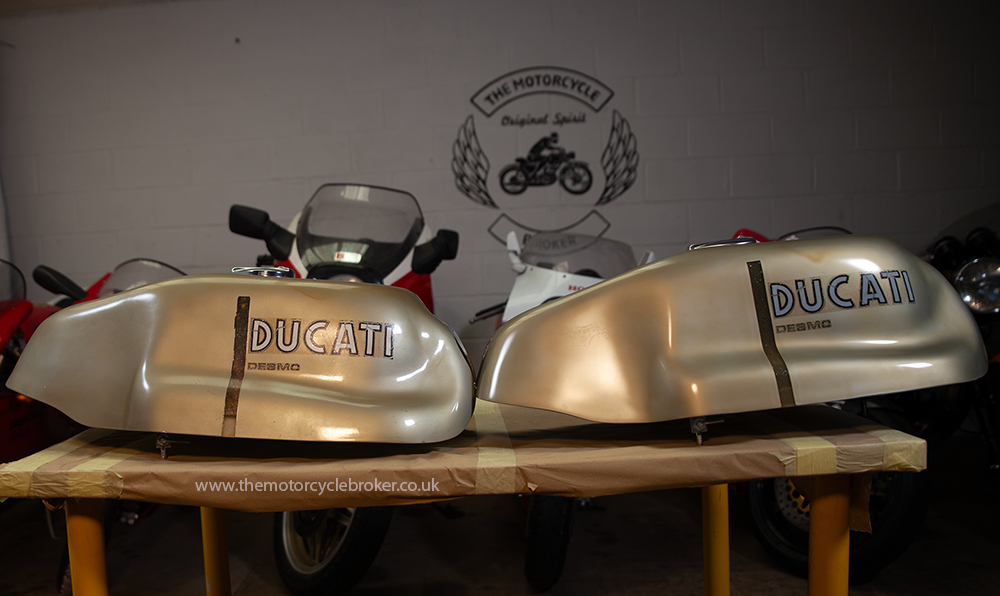
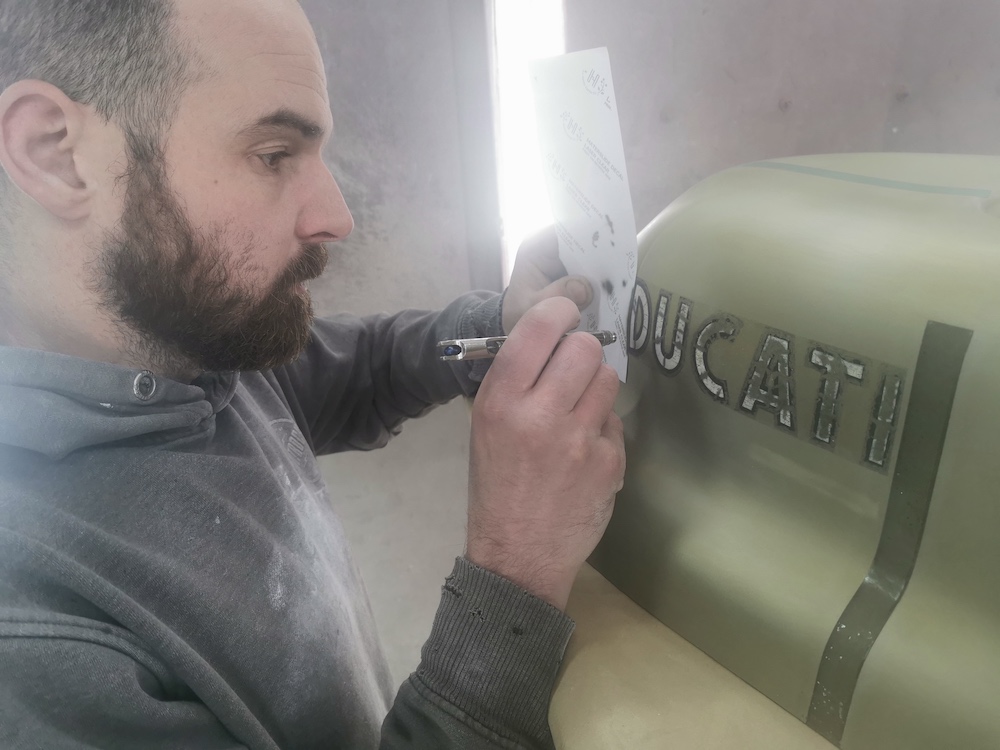
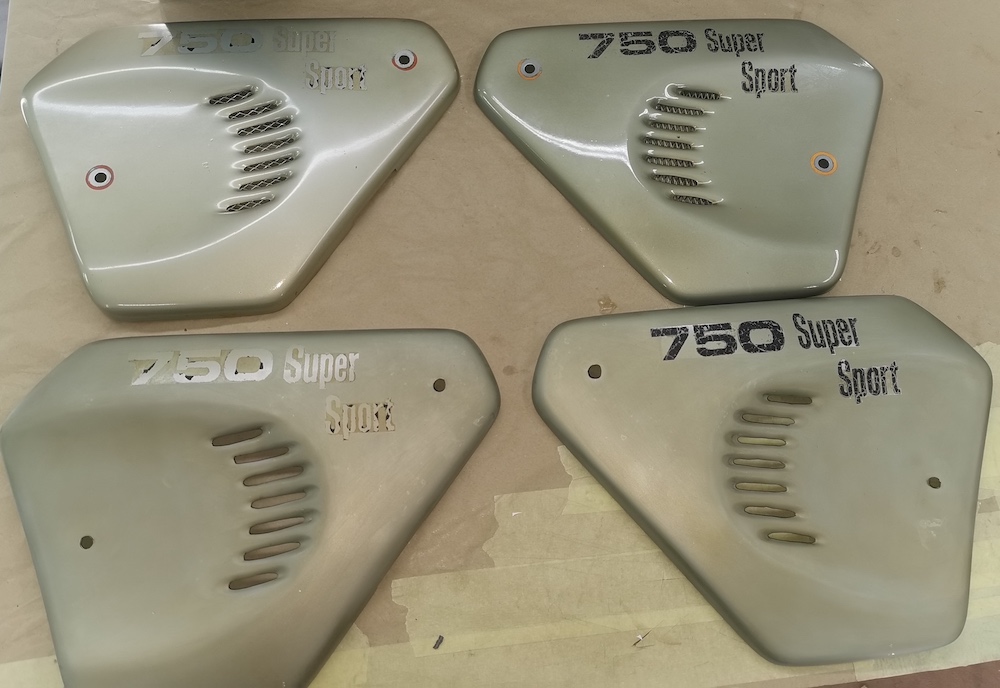
Buying classic motorcycles at auction and from collectors
Buying classic motorcycles at auction and from collectors can be exciting, fun and quite an adrenalin hit. Once that purchase has been made, and the excitement has subsided, the spending starts along with your journey with that particular machine. The motorcycle will make demands on the buyer no matter how lucky you are. At The Motorcycle Broker we can sell you a machine with a due diligence report on site as seen and knowing that you have a machine with all the correct parts and a due diligence report (Level 1). We can supply your machine as in Level 1, but we will have removed all body work and fully assessed it for any future works and supply an estimate and due diligence report (Level 2). The next level is where the machine is set up correctly to ride and enjoy mechanically and with a due diligence and workshop file (Level 3). Finally we can offer a service which is where we source the motorcycle and undertake our thorough remedial work to bring it up to concours standard, supplied with a workshop and due diligence file (Level 4). Each way of buying through The Motorcycle Broker at the very least offers thorough due diligence at the very least so you know you are buying the real machine. Our services are fully transparent which buyers can also take time to consider whether or not to buy at this point in time and not be rushed into an instant decision, unlike the frenzy of an auction. Buying through The Motorcycle Broker is a far more transparent process than buying classic motorcycles at auction and from collectors because you fully understand the condition of the machine and how original it is. No one has X-ray specs (unless you did get your hands on a set from a Bazooka Joe bubblegum in the 1970s) and really knowing these machines takes quite a bit of investigating by test riding and work on the ramp. If you would like to experience a no pressure, transparent way of sourcing your investment grade classic motorcycle instead of buying classic motorcycles at auction and from collectors, then contact us in the normal ways or using the form below.
- Most collectible Ducati 916 SP - June 20, 2024
- Classic Motorcycles: To ride or not to ride? - June 17, 2024
- Classic Motorcycles: To ride or not to ride? - June 17, 2024




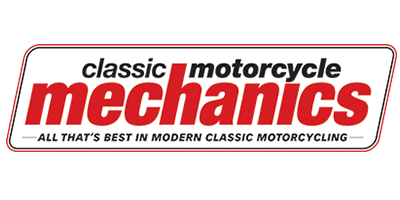



Leave a Reply